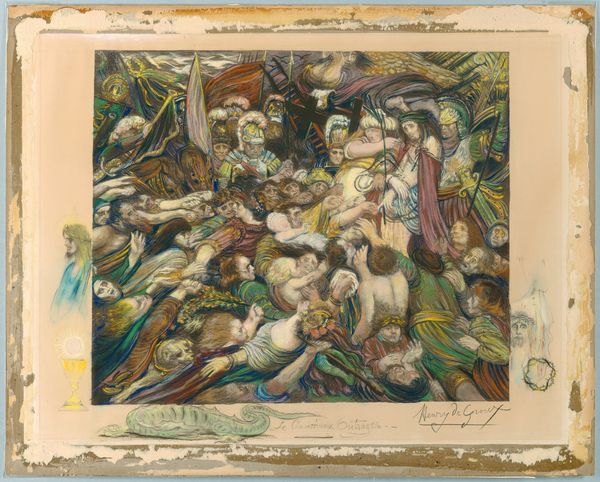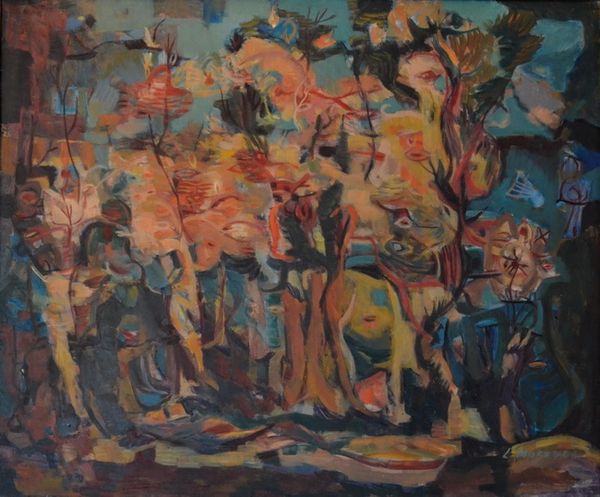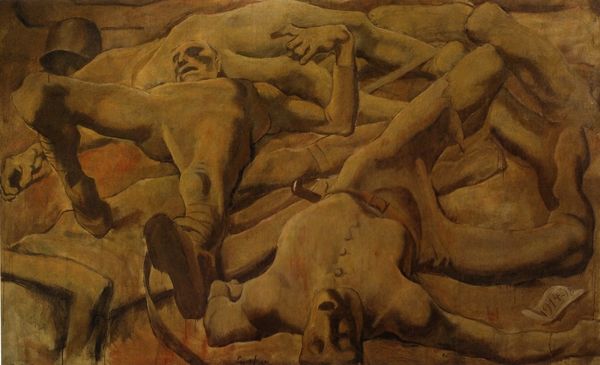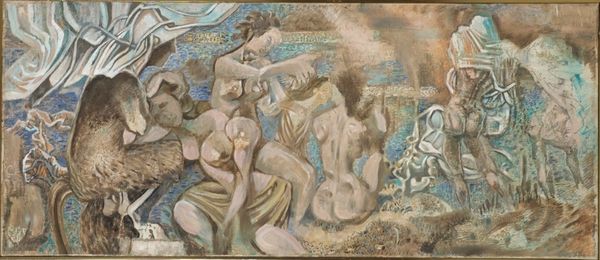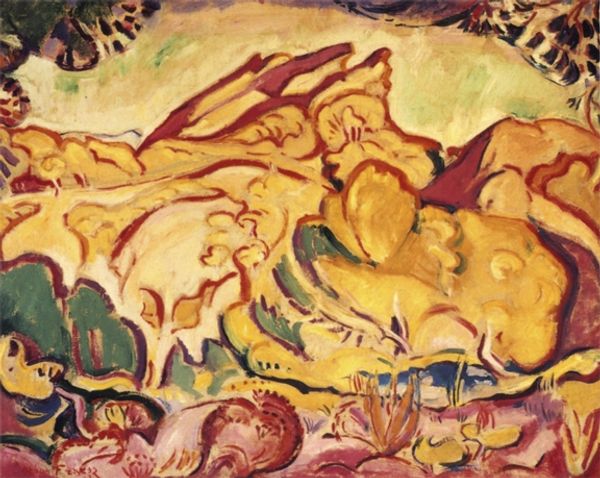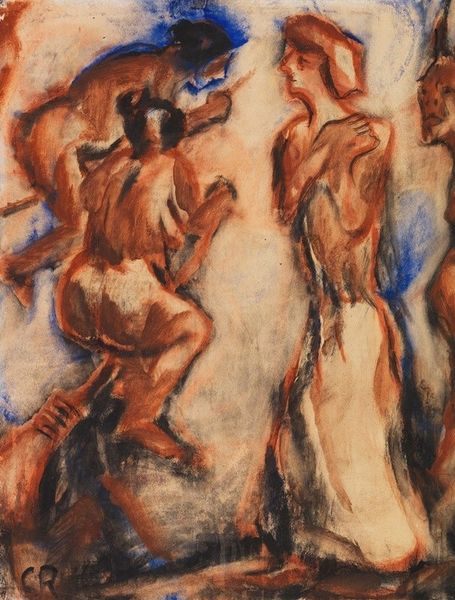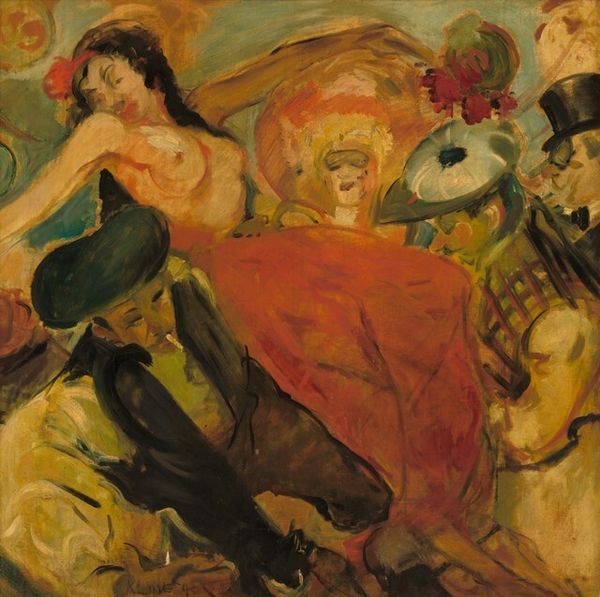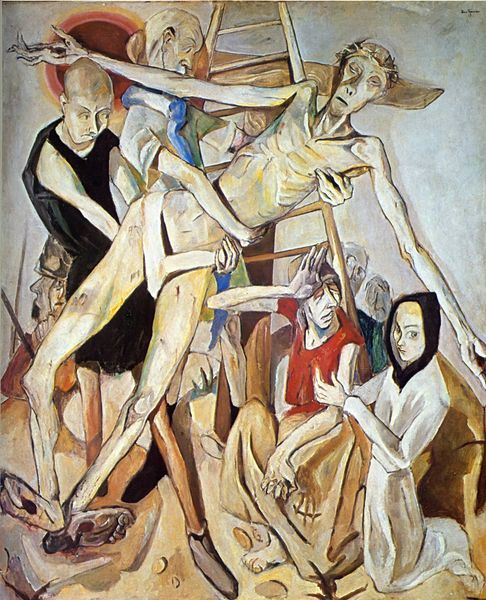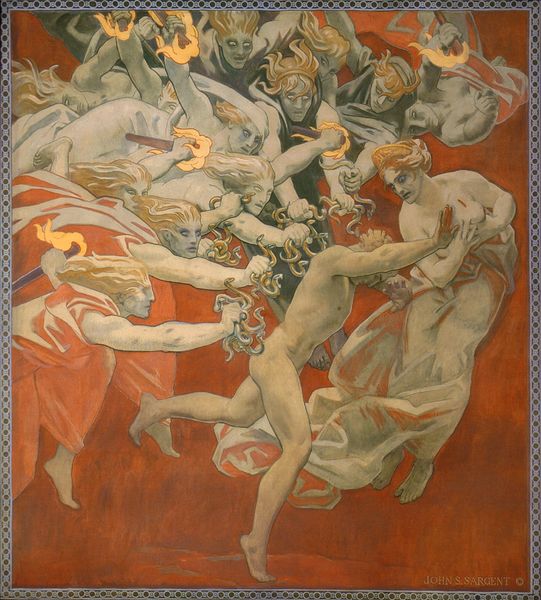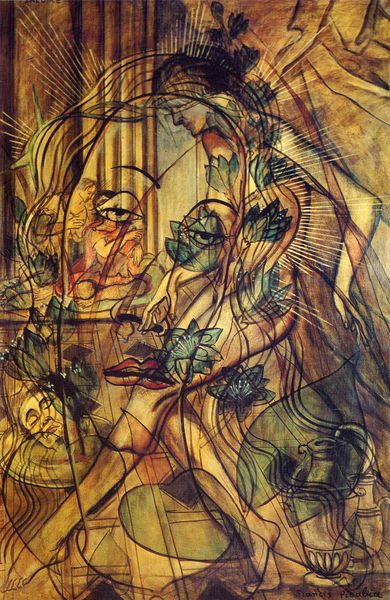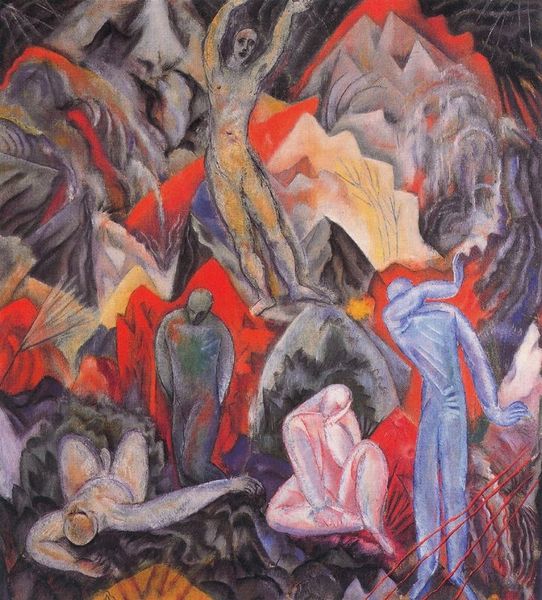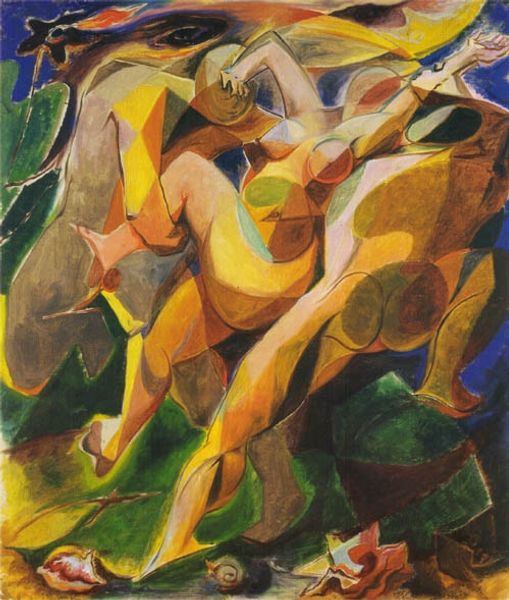
painting, oil-paint
#
portrait
#
painting
#
oil-paint
#
figuration
#
oil painting
#
group-portraits
#
expressionism
#
modernism
Copyright: Public domain
Editor: So, this is Georg Pauli's "Four Girls and a Student," painted in 1922 using oil on canvas. The colors are muted and the composition is quite… angular, almost fragmented. It's a peculiar social scene, isn’t it? What draws your eye to it? Curator: Well, look at the visible brushstrokes and how they contribute to the overall texture. This wasn't just about depicting a scene, but about showcasing the materiality of paint itself. Consider also, the post-World War I context in which this was produced; access to materials and shifting societal roles might inform why Pauli adopted such a non-traditional aesthetic. Editor: That's interesting. So, the limitations, or even perhaps, the abundance of materials available influenced the style? Curator: Precisely! Think about the pigments he chose; they were products of a specific chemical industry, reflective of industrial development. Then there’s the canvas, machine-made, a stark contrast to the hand-prepared supports of earlier eras. Each element plays a part in understanding the socio-economic landscape of the time. How might Pauli's access, or restriction, to these materials shift the viewers perception of the subjects? Editor: I see, so it’s not just what's depicted, but also how it's made, where those materials come from, and the economic realities shaping artistic choices. The factory made canvases against those beautiful dresses; one a part of daily life the other more bourgeois. Curator: Exactly. By considering these aspects, we can understand Pauli's work as more than just a painting; it’s a cultural artifact embedded within a web of production and consumption. Editor: That definitely gives me a new perspective. I never really thought about how the raw materials themselves played such a critical role in art history, as we consider consumerism as something very modern! Thanks, that was fascinating. Curator: It’s all about looking beyond the surface, isn't it? Thinking critically about production really changes our reading of art.
Comments
No comments
Be the first to comment and join the conversation on the ultimate creative platform.
